For greenhouse growers, April can be a perilous month. Warm weather, open doors and vents, people coming and going, and benches overflowing with transplants set the scene for a major explosion of greenhouse pests. The plants that looked so good for the past month may suddenly show signs of stress from one or more of the major culprits, which include aphids, fungus gnats, thrips, spider mites and whiteflies.
The best long-term solution to greenhouse insect problems is biological control, with beneficial insects or other organisms to control the pest population. But biological control takes time, as the beneficials must be researched, ordered, shipped, and released - not to mention the time it will take to achieve a balance with the pests. If you have a few more weeks of greenhouse work, you should definitely get started with bringing in beneficials.But in the meantime, you may need a quick knockdown strategy for plants that are headed for the field soon or under heavy assault by pests.
Fortunately, many low-toxicity products are available that will control the major greenhouse pests within about a week. Growers should be prepared for the possibility of a pest outbreak and either have a supply of product on hand or know where it can be obtained quickly if the need arises.
Numerous products can be used that range in toxicity from benign soaps and oils to broad-spectrum insecticides that require the grower to wear protective equipment and observe a federally mandated reentry interval. Because most Growing for Market readers are sustainably oriented, we have put together a list of products that are considered least toxic controls for greenhouse pests. Each of these products listed below, categorized by their primary active ingredient, are available in formulations that have been approved by the Organic Materials Review Institute (OMRI) for use by certified-organic growers. Other formulations are available but do not have the OMRI approval, either because they contain other ingredients prohibited by the National Organic Program (NOP) or because the manufacturer has not submitted them to OMRI for review.
Even some products that have been approved by OMRI are considered by the federal organic standards to be “restricted” materials, which means they can only be used if other “management practices” have failed. The practices that are recommended in the organic standards as the first line of defense against pests include:
- Crop rotation and soil and crop nutrient management practices;
- Sanitation measures to remove habitat for pest organisms;
- Cultural practices that enhance crop health, including selection of plant species and varieties;
- Introduction of predators or parasites of the pest species;
- Development of habitat for natural enemies of pests;
- Nonsynthetic controls such as lures, traps, and repellents.
When those practices aren’t enough to control pests, organic growers can use some of the products listed below - as long as the conditions are documented in the organic system plan. In other words, you will have to explain why you are using a restricted product.
Following is a list of least-toxic products that can be employed against common greenhouse and other pests. Included in each section is information about what the product is, how it kills insects, whether it has any residual effects, whether it’s compatible with a biocontrol program, brand names of formulations that have been approved by the Organic Materials Review Institute, and other comments. Certified organic growers should always check with their own certifier if in doubt about a product or use of it. All products are registered for either food crops or ornamental crops or both, so be sure to get the right kind for your crops. For the latest updates on approved products, see the Brand Name Products List on the OMRI web site, www.omri.org.

Bt israelensis
What it is: Bt is a naturally occurring bacterium, and this particular strain is effective against the larvae of fungus gnats.
How it works: When Bt israelensis is ingested, fungus gnat larvae become paralyzed, stop feeding and die, usually within 24 hours. However, control can take more than a week because of the fact that the product works only on the larvae. The life cycle is: Adult fungus gnats live about 7 days, then lay eggs, which hatch in four days. The larvae are present in the soil for 14 days before pupating and emerging as flying adults.
Pests controlled: black flies, fungus gnats, mosquitoes.
Compatibility with biocontrols: Only the target species are affected.
OMRI-approved brands: Gnatrol DG
Comments: You can monitor for larvae by pushing a cut piece of raw potato into the soil. If larvae are present, you will see them on the potato within a week. Gnatrol is a soil drench and should be applied weekly for three weeks to control the fungus gnat larvae. The ground beneath benches should also be treated, because it is prime habitat.
Beauveria bassiana
What it is: Beauveria bassiana is a fungus that is naturally occurring in soils.
How it works: When spores of the fungus come in contact with the cuticle of certain susceptible insects, the spores attach and grow through the cuticle. The fungus proliferates throughout the insect, eventually killing it. At 72°F, aphids are killed in three to five days. At lower temperatures, it may take up to 10 days.
Pests controlled: Depending on formulation, Beauveria bassiana can be used for aphids, thrips, mealybugs, whitefly, fungus gnats, leafhoppers, caterpillars, psyllids, weevils and shore flies.
Compatibility with biocontrols: Beauveria bassiana is thought to be safe for most beneficials, but it can harm bees, and should not be used near water as it is potentially toxic to fish.
OMRI-approved brands: Mycotrol O strain GHA; Naturalis H&G; Naturalis L.
Comments: These products are expensive, so be sure to buy a formulation that is labeled for use on the crops you grow in the field, as well as greenhouse crops. Monitor carefully and spray every five to seven days if needed. Mix only what you can use, as the fungal spores will die within a day. Spray foliage until it’s wet but not running off, both top and bottom of leaves.
Neem
What it is: Neem is the generic name given to products extracted from the seeds of the neem tree, which is native to Southeast Asia. It is widely used in its native countries for herbal medicines, cosmetics and pharmaceutical products as well as for pest control. (See page 3 for a news item on a U.S. company’s efforts to patent neem.)
The neem tree seed produces a compound called azadirachtin that affects insects. Several products containing azadirachtin are available, including Azatin and AZA-Direct. They are produced by treating neem seed oil with alcohol, which separates the azadirachtin from the oil.
The remaining oil, which contains very little azadirachtin but many other biologically active compounds, is also used for pest control. Neem oils are also used for control of foliar diseases including powdery and downy mildew, black spot, botrytis, rusts and scab.
How it works: Neem is considered an insect growth regulator because it repels insects, stops them from feeding and prevents molting. Insects that ingest neem will die within several days. The residual lasts two to seven days.
Pests controlled: aphids, cutworms, fungus gnats, shore flies, leaf miners, thrips, and many other insects. It also is effective against powdery mildew.
Compatibility with biocontrols: Neem products can kill beneficials, so should be used before a release and only on highly infested plants if beneficials are already present in the greenhouse. Once the spray has dried, it won’t hurt beneficials.
OMRI-approved brands: Agroneem; AZA-Direct; Azatrol; Concern; Green Light; Neem Cake; Neemix; Organica K+ Neem; Safer Brand 3 in 1 Garden Spray; Triact 70 EC (Green Line); Trilogy (Green Line)
Oils
What it is: Horticultural oils are highly refined oils from either mineral or plant sources. They are sometimes still referred to as “dormant oils” because earlier generations were so heavy they burned leaves and could be used only on dormant plants. Today’s horticultural oils are much lighter and less likely to cause damage to the plant and are sometimes called “summer” oils.
How it works: Horticultural oil smothers insects and disease spores, so thorough coverage is essential.
Pests controlled: aphids, mites, leaf miners, mealybugs, caterpillars, thrips, whiteflies.
Compatibility with biocontrols: Oils will smother beneficials as well as pests, so either use oils before introducing beneficials or limit spraying to only the most infested plants.
OMRI-approved brands: Nonsynthetic oils that are allowed without restrictions: A-Plus; Carrier; Concern Pesticide Spray Oil; ECO E-RASE; Feed-N-Gro SeaCide; GC-3; GC-Mite; Golden Pest Spray Oil; Lilly Miller Vegol Growing Season Spray Oil; Natur’l Oil; Oleum; SeaCide; Trendcide; Vegol.
Petroleum based oils that are restricted in their use include Organic JMS Stylet Oil; PureSpray Green.
Comments: For organic growers, vegetable oils are allowed, and in response, many products are now available that are vegetable-based.
Pyrethrins
What it is: Pyrethrum is a broad-spectrum insecticide extracted from the dried flowers of a Chrysanthemum species native to Kenya. The plant extract, called pyrethrum, contains pyrethrin I and pyrethrin II, collectively called pyrethrins. The words pyrethrins and pyrethrum are often used interchangeably and both are botanical insecticides. Pyrethroids, however, are synthetic chemicals.
How it works: Pyrethrins kill insects on contact by affecting the insect’s nervous system. It is both a contact and stomach poison, and kills immediately. But it has only about 24 hours of residual activity.
Pests controlled: aphids, thrips, whiteflies in the greenhouse; plus ants, army worms, beetles, caterpillars, cockroaches, earwigs, fleas, flies, leafrollers, leafhoppers, psyllids, ticks, and more.
Compatibility with biocontrols: Pyrethrins kill beneficials.
OMRI-approved brands: Pyganic Crop Protection EC 1.4 II; Pyganic Crop Protection EC 5.0 II; Safer Brand Yard & Garden Insect Killer Concentrate II; Safer Brand Yard & Garden Insect Killer II.
Comments: Many pyrethrin products contain a synergist such as piperonyl butoxide (PBO). Synergists restrict an enzyme that insects use to detoxify the pyrethrins, so the syngergist makes the insecticide more effective. However, products containing PBO are not allowed in organic production.
Soap
What it is: Insecticidal soaps are derived from potassium salts of fatty acids.
How it works: Soap smothers and dessicates insects, so the pests must be completely covered for it to be effective. That means spraying on all plant surfaces, especially the underside of leaves.
Pests controlled: soft-bodied insects such as aphids, mealybugs, whiteflies, spider mites, scales, and others.
Compatibility with biocontrols: Soap has no residual effect (so may need to be reapplied every three to five days), but it can kill beneficials that it contacts. Either use soap sprays before introducing beneficials, or limit spraying to only the most infested plants.
OMRI-approved brands: M-Pede;
Comments: Soaps can be phytotoxic, especially if sprayed on sunny days. Try to water plants first to make them well hydrated, then spray the soap toward sunset on a test area. If the foliage is damaged, dilute the soap more before testing again.
Where to buy greenhouse pest-control products
Many regional wholesale greenhouse suppliers now carry OMRI-approved products or similar products. Some product lines such as Safer’s and Green Light are available from garden centers and discount stores.
The sources that provide the most complete descriptions and customer support for pest control products are these mail-order companies:
- Harmony Farm Supply, 707-823-9125; www.harmonyfarm.com.
- Harris Seed, 800-544-7938; www.harrisseeds.com.
- Johnny’s Selected Seeds, 800-854-2580; www.johnnyseeds.com.
- Gardens Alive, 812-537-8650; www.GardensAlive.com
- Peaceful Valley Farm Supply, 888-784-1722; www.groworganic.com.

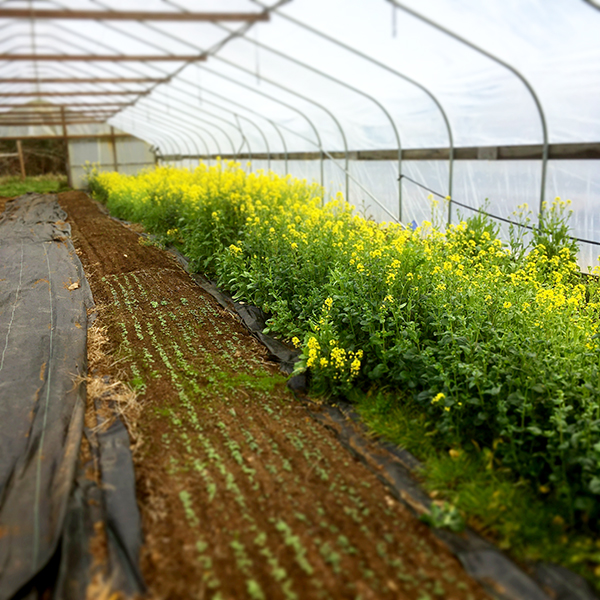 If you’ve been a subscriber to Growing For Market (or even if you haven’t), you’re probably familiar with the many advantages of no-till agriculture. No-till methods can reduce a farm’s carbon footprint, promote complex soil biology, and preserve and build organic matter.
If you’ve been a subscriber to Growing For Market (or even if you haven’t), you’re probably familiar with the many advantages of no-till agriculture. No-till methods can reduce a farm’s carbon footprint, promote complex soil biology, and preserve and build organic matter.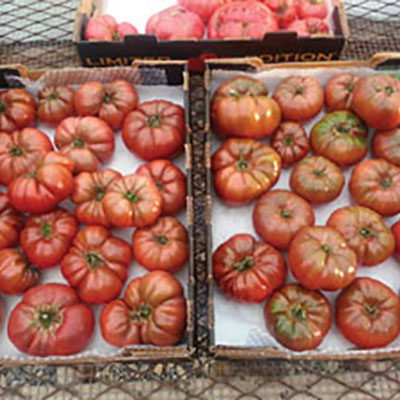
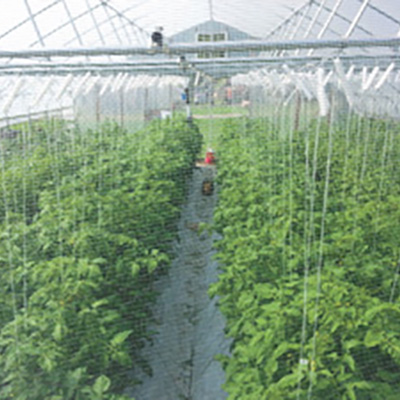

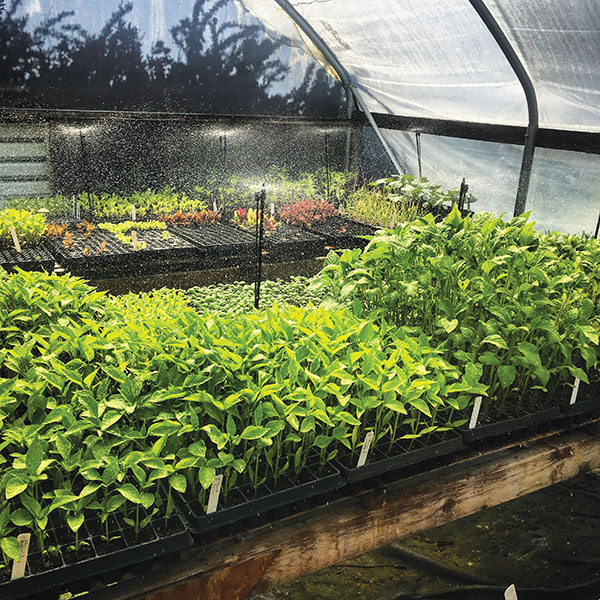 Since it’s the beginning of the year I’m sure lots of you are just about to start filling your greenhouses back up with seedlings in flats, plug trays, soil blocks and nursery pots, just as I am. If you’re not already using automatic water in your greenhouse, I’d encourage you to go check the archives for “Water Greenhouse Plants Automatically” that ran in the January 2010 issue, and I’ll give an update here on the evolution of my greenhouse sprinkler system, and what I’ve ultimately been using for at least the last eight years with good success and next to no problems.
Since it’s the beginning of the year I’m sure lots of you are just about to start filling your greenhouses back up with seedlings in flats, plug trays, soil blocks and nursery pots, just as I am. If you’re not already using automatic water in your greenhouse, I’d encourage you to go check the archives for “Water Greenhouse Plants Automatically” that ran in the January 2010 issue, and I’ll give an update here on the evolution of my greenhouse sprinkler system, and what I’ve ultimately been using for at least the last eight years with good success and next to no problems.
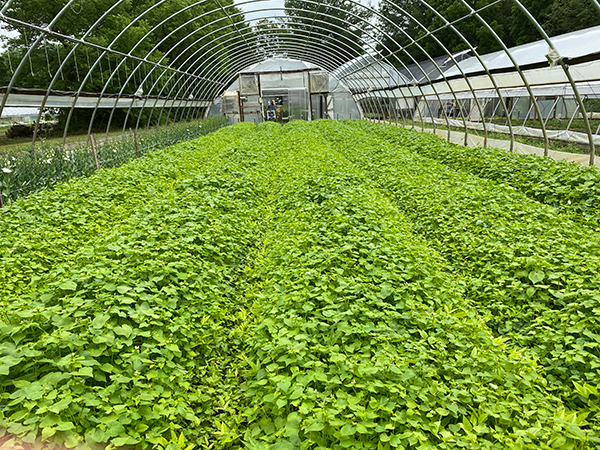 Over the last 10 years, there has been a lot of information coming out pertaining to growing veggies in soil in greenhouses. We wanted to share some of what we’ve learned over the past 13 years growing flowers under plastic and touch on some new approaches we’ve implemented since we last wrote about greenhouse growing (see our GFM articles in November 2014, November 2015, and April 2018).
Over the last 10 years, there has been a lot of information coming out pertaining to growing veggies in soil in greenhouses. We wanted to share some of what we’ve learned over the past 13 years growing flowers under plastic and touch on some new approaches we’ve implemented since we last wrote about greenhouse growing (see our GFM articles in November 2014, November 2015, and April 2018).
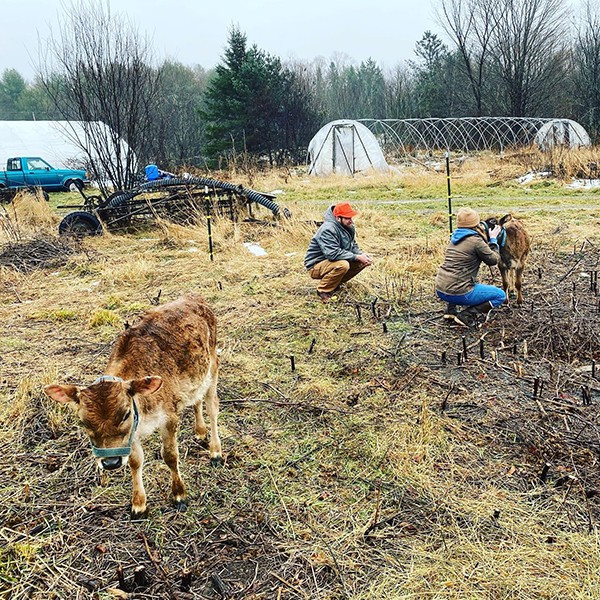 Why two of our hoophouses are named because of Emily
Why two of our hoophouses are named because of Emily
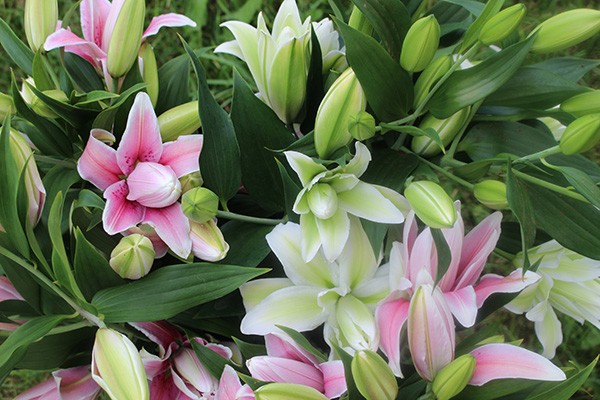 As soon as we start driving our routes in the spring our customers ask us when we’ll have roselilies. They’re that popular and have become a signature crop for us. They’re basically a type of oriental lily, but with multiple layers of petals, and without stamens and pistils (i.e. no pollen!).
As soon as we start driving our routes in the spring our customers ask us when we’ll have roselilies. They’re that popular and have become a signature crop for us. They’re basically a type of oriental lily, but with multiple layers of petals, and without stamens and pistils (i.e. no pollen!). 
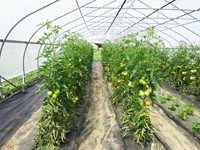

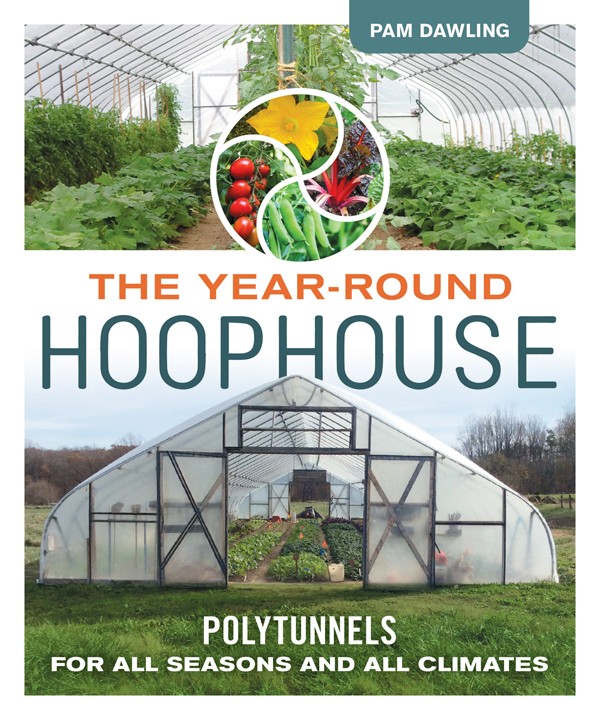 In the hoophouse plants grow bigger and faster. We want to avoid anything that slows growth down. All that growing burns up the organic matter and nutrients in the soil at a fast rate, particularly in hot, humid climates. We need to replenish the soil more generously and more often than we do outdoors. Good soil health means having enough plant nutrients, not surplus. If you have too much soluble nitrogen (N), it can leach into the groundwater or burn up the organic matter. Using manure or compost for a nitrogen source can cause the build-up of excess phosphorus (P).
In the hoophouse plants grow bigger and faster. We want to avoid anything that slows growth down. All that growing burns up the organic matter and nutrients in the soil at a fast rate, particularly in hot, humid climates. We need to replenish the soil more generously and more often than we do outdoors. Good soil health means having enough plant nutrients, not surplus. If you have too much soluble nitrogen (N), it can leach into the groundwater or burn up the organic matter. Using manure or compost for a nitrogen source can cause the build-up of excess phosphorus (P).
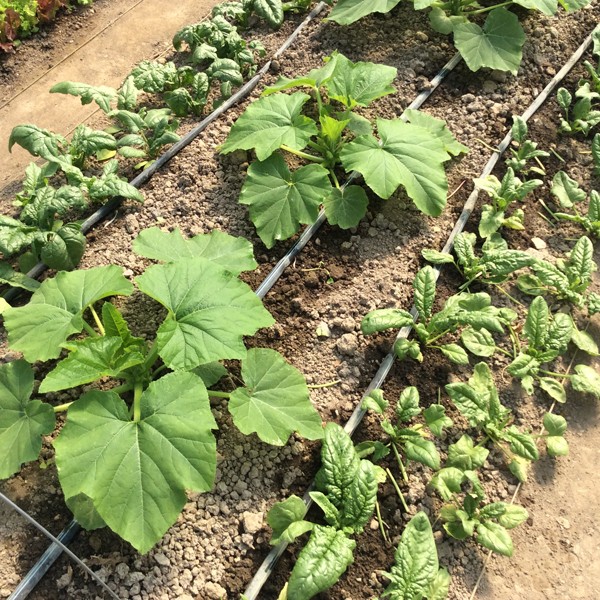 We have three main seasons in our zone 7 central Virginia hoophouse: fall-winter (October to March), spring-early summer (March to July) and high summer (August and September). We grow one bed (90’/27.5 m or so) each of yellow squash and bush cucumbers in the spring-summer season, for reliable early harvests and to help with crop rotation. If you farm in a colder climate than ours, you might be questioning allocating the precious real estate to a crop that so quickly goes from desirable to over-abundant, especially when there are more profitable things to give the space to. One reason is a difference between southern and northern climates.
We have three main seasons in our zone 7 central Virginia hoophouse: fall-winter (October to March), spring-early summer (March to July) and high summer (August and September). We grow one bed (90’/27.5 m or so) each of yellow squash and bush cucumbers in the spring-summer season, for reliable early harvests and to help with crop rotation. If you farm in a colder climate than ours, you might be questioning allocating the precious real estate to a crop that so quickly goes from desirable to over-abundant, especially when there are more profitable things to give the space to. One reason is a difference between southern and northern climates.
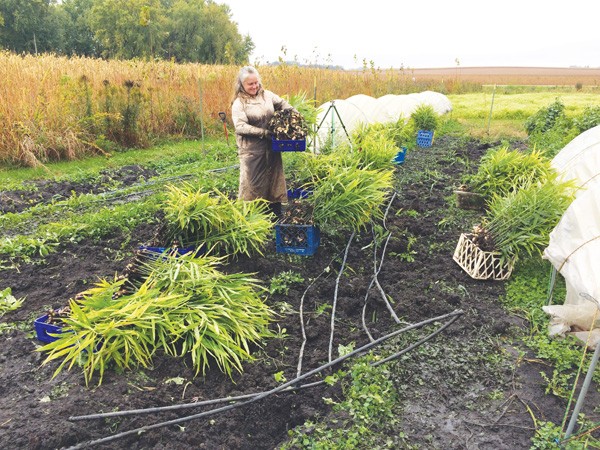 Local and organic ginger is a high-value crop that in the right market can be in high demand. Growing this tropical crop in the Midwest can be a challenge, and thus far, farmers thought they had to own a high tunnel to ensure adequate heat during the variable spring and fall seasons. High tunnel space on most farms is at a premium, so it is expensive space to devote to a long-season crop.
Local and organic ginger is a high-value crop that in the right market can be in high demand. Growing this tropical crop in the Midwest can be a challenge, and thus far, farmers thought they had to own a high tunnel to ensure adequate heat during the variable spring and fall seasons. High tunnel space on most farms is at a premium, so it is expensive space to devote to a long-season crop. 
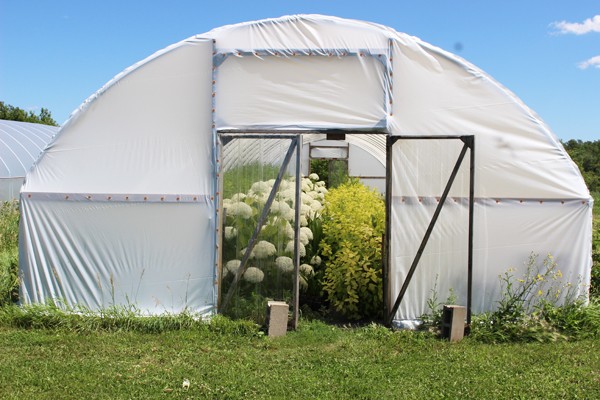 With protected space on the farm at a premium, we have to choose wisely when deciding which crops are worth putting under cover. We start out by deciding what to grow overall, and then deciding how much of that can fit inside structures, by doing a little revenue and profit analysis. Quickbooks is used to record sales, so it’s easy to list sales per item at the end of the year to see what brought in the most revenue. A version of that report extracted to a spreadsheet calculates profit per square foot by first subtracting the costs of plugs or bulbs, and then dividing by the cultivated area for each item.
With protected space on the farm at a premium, we have to choose wisely when deciding which crops are worth putting under cover. We start out by deciding what to grow overall, and then deciding how much of that can fit inside structures, by doing a little revenue and profit analysis. Quickbooks is used to record sales, so it’s easy to list sales per item at the end of the year to see what brought in the most revenue. A version of that report extracted to a spreadsheet calculates profit per square foot by first subtracting the costs of plugs or bulbs, and then dividing by the cultivated area for each item. 
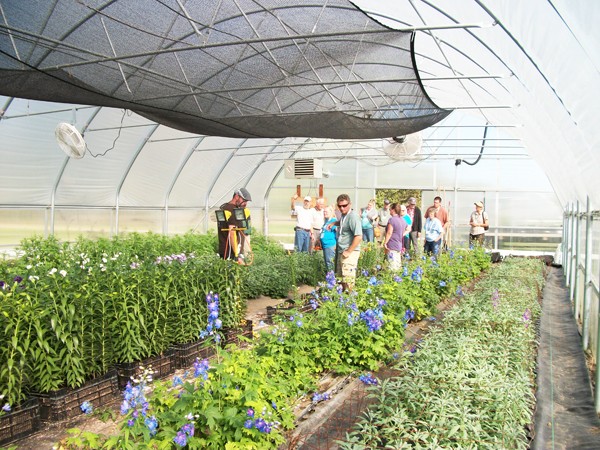 Prairie Garden Farm has been growing cut flowers for florists and studio designers since 2010. As we’re on an exposed hillside in west-central Minnesota, we’re dependent on protected culture to grow quality flowers. This article describes our approach – planning, financial, and operational details - that helps us make the most of our structures.
Prairie Garden Farm has been growing cut flowers for florists and studio designers since 2010. As we’re on an exposed hillside in west-central Minnesota, we’re dependent on protected culture to grow quality flowers. This article describes our approach – planning, financial, and operational details - that helps us make the most of our structures.
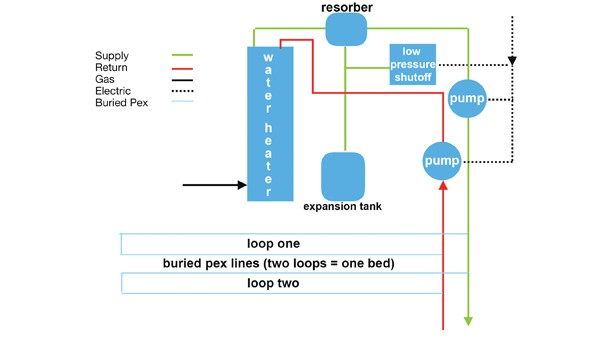 Do you want to be able to heat your greenhouse with radiant heat? Are you interested in being able to heat your soil to extend your season or even grow through the winter? In this article we will examine how we built a hydronic radiant heat system for our greenhouse, and how you can do this at your farm.
Do you want to be able to heat your greenhouse with radiant heat? Are you interested in being able to heat your soil to extend your season or even grow through the winter? In this article we will examine how we built a hydronic radiant heat system for our greenhouse, and how you can do this at your farm.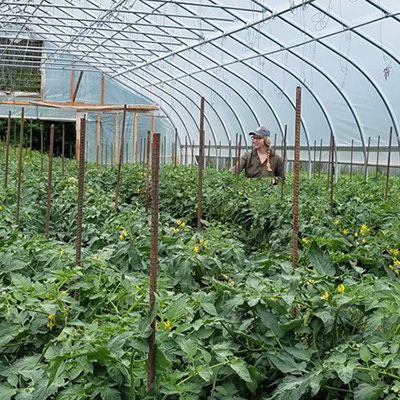
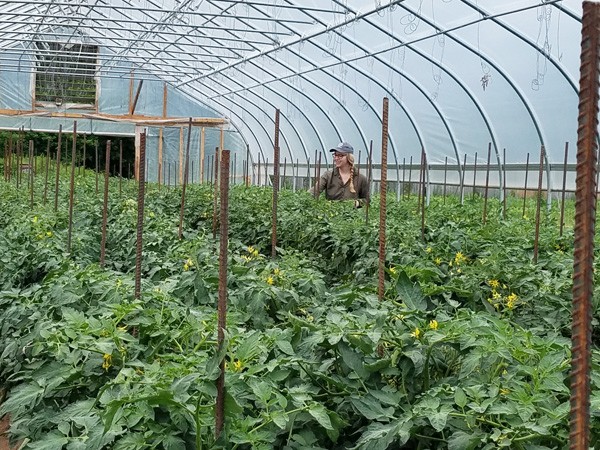 High tunnels have played a crucial role in season extension for market growers, with popularity increasing over the last decade to meet demand for locally grown produce year round (or close to it). Once built, the high tunnel becomes some of the most valuable real estate on the farm and many growers are able to produce exceptional yields in the first few years. After several seasons, yields begin to decline and many growers struggle to maintain productivity.
High tunnels have played a crucial role in season extension for market growers, with popularity increasing over the last decade to meet demand for locally grown produce year round (or close to it). Once built, the high tunnel becomes some of the most valuable real estate on the farm and many growers are able to produce exceptional yields in the first few years. After several seasons, yields begin to decline and many growers struggle to maintain productivity. 